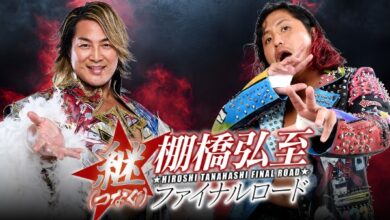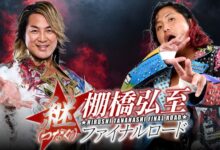GLOW Season 2 Characters Draw Comparisons To WWE Superstars Of Present And Past

The following contains spoilers for the second season of GLOW.
Season two of GLOW drops on Netflix later this month so we decided to take a look at the parallels between the titular Gorgeous Ladies of Wrestling and their World Wrestling Entertainment counterparts.
Zoya the Destroyer.
As perhaps the star of the show, Zoya (Alison Brie) has many parallels, most obviously to Nikolai Volkoff and Ivan Kolloff and, of course, Lana. But in season two of GLOW, Zoya begins to have more fun with her character, just as Lana seems to be doing on WWE TV right now. When Zoya is paired with Chola Junk Chain, a new version of the character portrayed by exotic dancer Yolanda (Shakira Barrera) after Cherry Bang (Sydelle Noel) gets cast in a crime show, they surprise everyone by staging not a wrestling match so much as a dance off, throwing shades of the same between Lana and Naomi on SmackDown Live. This kiss Zoya blows to Chola Junk Chain also arouses the heightened theatricality of the Mae Young Classic match between Bianca Belair and Kairi Sane, in which Kairi stomps on an air kiss from Belair.
And when the final act of the show needs saving, Zoya ascends from the rafters of the dingey warehouse they’ve been passing off as Hayworth Ballroom on a zipline, recalling Shawn Michaels’ iconic entrance at WrestleMania XII.
Bei Rut.
Arthie, aka Bei Rut (Sunita Mani) has one of the most fascinating character arcs this season. Itching to break out of the stereotypical terrorist gimmick she’s been saddled with, she also entertains a ballroom dance scene with Yolanda, which is not totally dissimilar to Lana’s re-debut promos last year.
Furthermore, on Total Divas we’ve seen Lana striving to be perceived as more than a hot blonde model and to be taken seriously for her wrestling. While it’s hard to cry more than crocodile tears for Lana, Arthie and other characters who are stereotyped by their race provide a more relatable touchstone for wanting to be seen for everything you can offer, not just the color of your skin.
Black Magic.
GLOW’s town is only big enough for one Junk Chain, so when Chola Junk Chain won the rights to the character and to drop the racist qualifier from her name in a Loser Leaves Town Match, Cherry is left scrambling for a new character. Enter: Black Magic, who performs voodoo in the ring and hits her finishing move with her eyes rolled back in her head, à la The Undertaker.
Parallels to the Magical Negro archetype, such as Kamala, Papa Shango and arguably The Boogey, are also evident.
Sheila the She Wolf.
The ’80s weren’t known for their subtlety, hence Sheila’s (Gayle Rankin) over the top werewolf gimmick. Today Ember Moon incorporates werewolf iconography into her ring gear and work more effortlessly, using it to stand apart from her fellow women wrestlers in a way similar to Sheila.
Welfare Queen.
Tammé’s Welfare Queen was perhaps the most controversial character of the first season of GLOW, shocking woke viewers with its trademark ’80s political incorrectness. Portrayed by former WWE and TNA wrestler Kia Stevens, though—who thankfully get a lot more screen time this season—the gimmick is portrayed with nuance as audiences are privy to a more in-depth look into Tammé’s personal life. In a season two, episode four scene Welfare Queen makes her way to the ring, adorned in her plastic GLOW championship crown and cheap costume jewellery accoutrements evoke NXT era ratchet Sasha Banks.
Liberty Bell.
Perhaps the most over-the-top character in GLOW, which is no mean feat, Liberty Bell is classic ’80s nationalism in the vein of Hulk Hogan, especially when she essentially Hulks Up in one scene. But for a more recent example, you can’t go past NXT’s Lacy Evans, with her Southern accent, references to her daughter and the over-the-top patriotism. Whereas WWE’s portrayal of characters in this vein tend to make them the victor over threats to the American way of life, this show within the show makes Liberty so conceited and over-the-top that her all-Americaness is hard to stomach.
As mentioned above, GLOW drew some criticisms in its first season for leaning a bit too hard on the ’80s tropes the audience initially thought it might try to upend. Given more time to get to the nitty gritty now that the concept of wrestling has been addressed for lay viewers in season one, GLOW is really able to tackle them in a way that the business, and especially WWE, hasn’t really achieved.
I guess wrestling hasn’t changed all that much since GLOW’s heyday.




